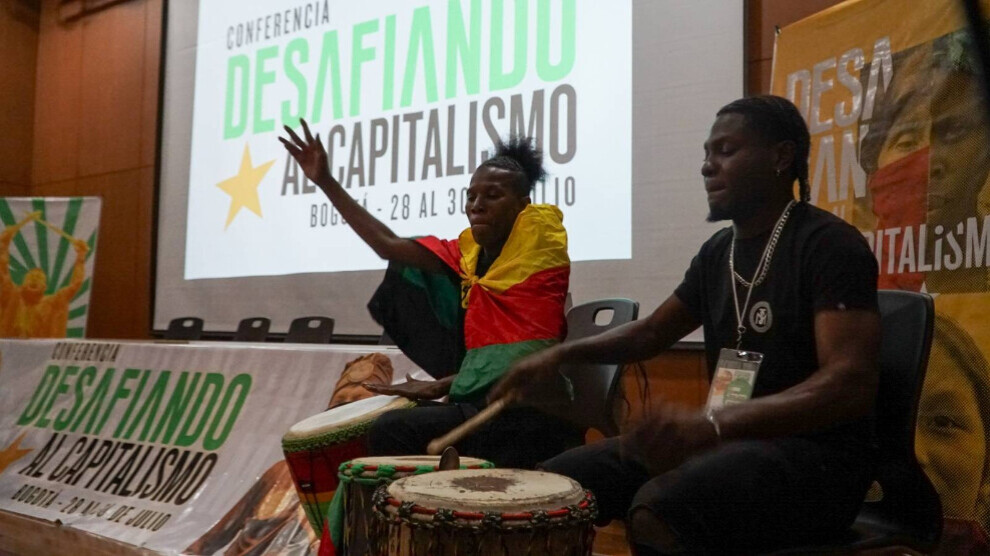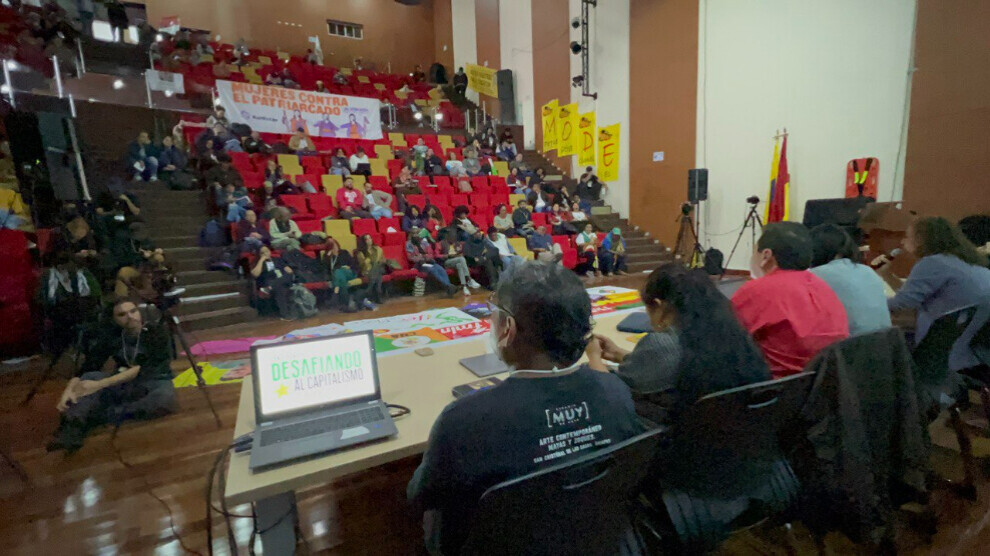In her latest book "Beastly," Keggie Carew explores the historical relationship between humans and wildlife. Highlighting the power and beauty of animals in the wild as well as the damage humans wrought on the natural world, Carew's book is both poignant and melancholic, writes Joshua Huminski.
It seemed as though the devastation wrought by Russia against Ukraine could plumb no new depths—the targeting of civilians, the destruction of infrastructure, and the degradation of the country’s military seemed all encompassing. That was until in June 2023, when the Kakhovka dam in Ukraine collapsed. Believed to have either been willfully destroyed by the Russian forces occupying the dam or having collapsed because of negligence by those same forces, the dam released the equivalent of Utah’s Great Salt Lake in the United States—some 18 cubic kilometers of water. Ukrainian President Volodymyr Zelensky called the destruction of the dam “brutal ecocide,” essentially an environmental war crime. The destruction of the dam and the resulting flooding is nothing short of an ecological disaster, washing away fertile soil, sending landmines cascading downriver, and polluting the waters, to say nothing of the thousands of people left homeless.

Beastly | Keggie Carew | Canongate (UK), Abrams Press (U.S.)
The calculation of the long-term ecological and environmental devastation is only just beginning. Humanity’s ability to impact the natural world was once again vividly on display—only in this instance demonstrated in a violent explosion as opposed to the slow boil of global warming or the incremental destruction of the animal kingdom. Keggie Carew, a Costa Award-winning author, explores this historical relationship between humans and animals in her book “Beastly.” It is a curious literary look at how the former affected the latter since humans arrived on the scene some 40,000 years ago. Carew shows both the power and beauty of animals in the wild, but also the damage and destruction humanity has wrought on the natural world. It is at once poignant and uplifting, but deeply melancholic.
Early David Attenborough this is not; it is far more reminiscent of his more recent documentary lamentations. Indeed, readers expecting a linear documentary should be forewarned that it is much more of an avant-garde exploration of the natural world. Carew interposes her own personal experiences with portraits of naturalists, and poetic snapshots of the natural world with more familiar animal voyeurism. The disjointedness of its structure may be off-putting for some readers, especially as the more interesting sections are abruptly ended, or suddenly shift in tone or style.
She writes how humanity’s understanding of the animal world was and, in many ways, remains philosophically warped. From early theological views that animals could not have souls and therefore were unworthy of our affection or pity (all dogs did not go to heaven in the eyes of Thomas Aquinas) to Descartes’ mechanistic views that viewed animals as unfeeling, unthinking automatons (which led him to conduct public vivisections), human appreciation for animals’ ability to think and feel was markedly circumscribed. Both philosophical positions are so utterly alien to anyone who has had the privilege of having an animal member of the family that it is baffling that individuals who were otherwise so intelligent held such bizarre views.
More “modern” efforts to understand the natural world were just as ill-formed and poorly executed, taking animals out of their natural world and placing them in a lab. Fish truly out of water yielded, shockingly, strange results on which entire theories were constructed. The desire to avoid anthropomorphizing animals—and woe unto any scientist who suggested otherwise—wholly warped our understanding of the creatures themselves. We now know, far more conclusively and scientifically, that animals are anything but “dumb beasts.” They are capable of complex emotions, feel pain, have moods, enjoy play, and some species are highly creative. Animal intelligence is increasingly seen everywhere and not just from our beloved pets.
Humanity in its arrogance assumes that it can understand the totality of the natural world, yet it still fails to see and appreciate its inherent complexity. We fail to see how the removal of one keystone species leads to unanticipated devastation. Just as the fine balance and interplay between kelp, sea otters, and sea urchins, leads to the creation of an underwater ecosystem, the removal of the otters on America’s coast had a cascade effect, devastating the chain. Carew writes, “We mess with these interactions at our peril, for they’re so immensely complex we do not understand them.”
Ironically for all the purported wisdom, superstition remains a driver of animal extinction. Carew writes how Chinese traditional medicine and associated beliefs are behind the mass poaching of rhino and elephants for their ivory tusks. Practitioners believe these horns are everything from aphrodisiacs to cures for cancer. Purported delicacies such as shark fin soup lead to the mass extermination of one of nature's most incredible survivors and apex predators. The practices are deplorable, yet they will not end unless demand or, and far more likely, supply is exhausted.
And then there is human food consumption. Some 60% of mammals on earth are agricultural livestock, 70% of birds are chicken and other poultry—just 4% of mammals and 30% of birds are wild. Carew steers clear of outright calling for a vegetarian or vegan diet, but she does rightly declare that humanity can practice better animal husbandry. It is, however, a challenging prospect. While improving the welfare and care of agricultural animals is ethically and morally right, critics would argue: What price are customers willing to pay and able to sustain this quality of care?
Agriculture is big business in America, contributing nearly $1.3 trillion to GDP, and changing the habits and behaviors of “Big Ag” is politically unthinkable. Small-scale change is, perhaps, more viable. Carew writes of one farmer who decided to return to more natural methods of farming, returning native grasses, eschewing artificial pesticides and the like, and yielded better crops and healthier animals. Commendable to be sure. Scalable? That’s an entirely different question. Balance is, perhaps, the better goal. Jettisoning the zero-sum mentality that asserts a false binary: It is either all terrible and the way things are, or it is all prohibitively expensive but morally and ethically more sound.
The ghost of climate change looms in the background of Carew’s writing. All the impacts and devastation about which she writes has occurred and is occurring now. The changes that are looming, like an apocalyptic ghost of Christmas Yet to Come, will only accelerate and worsen the destruction of the animal world.
“Beastly” is a damning indictment of what humanity hath wrought on the animal kingdom, but it is not wholly without hope. Ironically, the one thing that may truly separate humanity from its animal cousins, and which has led to global destruction of animal habitats, could well be the thing that staunches the bleeding—the ability to change the environment at scale. The key is, however, not direct human intervention, but the absence thereof. The creation of green belts that connect forests and glens, the re-wilding of gardens and forests, the establishment of “blue joinery” that limits if not outright prohibits ocean activity, all are shown to have demonstrable effects at allowing nature to return to, well, nature.
Human intervention is often precisely what is not needed, arguably, merely the creation of space where nature can do what it does best, a point to which Carew frequently returns. Look at the effects of the pandemic. In Hawaii the coastal shore environment began to recover in the absence of human activity. In Venice’s famed canals, the water became clearer and wildlife returned to the waterways and inlets. Even absent COVID-19, look at what has happened in the area (prior to Russia’s war against Ukraine) in Chernobyl or the DMZ between North and South Korea—the animal world flourishes if humans simply leave them alone.
“Beastly” is a curious book in the end. It is neither a documentary nor a polemic; neither a call-to-arms manifesto, nor a “the end is nigh” lament. There are moments reminiscent of the best nature documentaries, the ones where viewers are surprised by animal ingenuity and creativity, reinvigorating their curiosity about the world around them. And there are moments that are rightly depressing, a mournful lament for species lost and habitats destroyed, coupled with shock at our predecessors’ barbarism (which in many ways remains). This juxtaposition is curiously captured on the competing dust jackets of the British and American editions. The former has a collection of deer silhouetted against and illuminated by a car park—assured danger in still form. The American version strikes a far more buoyant tone—a bright yellow backdrop with a real flamingo looking at its plastic lawn ornament counterpart.
This is perhaps supremely fitting, capturing our insatiable curiosity for the world around us and the animals that inhabit spaces both near and far, but also the imminent danger we pose to them by both action and inaction.
About Joshua Huminski
:
Joshua C. Huminski is Director of the Mike Rogers Center for Intelligence & Global Affairs at the Center for the Study of the Presidency & Congress, and a George Mason University National Security Institute Fellow. He can be found on Twitter @joshuachuminski.















